The Ultimate Guide to the AP Comparative Government and Politics Exam
Planning to take the AP Comparative Government and Politics exam? Whether you took the course or self-studied, here’s everything you need to know about the exam, plus tons of free resources to help you get a great score. The AP Comparative Government and Politics exam and course has been updated for the 2019-2020 school year, so pay special attention to these changes. You can read more about the changes in this AP Comparative Government updates document released by the College Board. Note that this post is not about the AP U.S. Government and Politics exam, the more popular of the two “AP Government” exams. Be sure to double-check that you’re looking at the right post for the exam you’re taking. On Thursday, May 14 at 8 am, the College Board will hold the 2020 AP Comparative Government Exam. For a comprehensive listing of all the AP exam times, check out our post 2020 AP Exam Schedule: Everything You Need to Know. The AP Comparative Government and Politics exam focuses on six core countries: China, Great Britain, Iran, Mexico, Nigeria, and Russia. According to the College Board, this exam measures your “ability to compare and contrast political regimes; electoral systems; federal structures; civil rights; and state responses to economic, social, and religious challenges over time.” Throughout the AP Comparative course, you’ll learn five key skills, or disciplinary practices as they are called by the College Board, which will help you think and act like comparative political scientists. Possessing and demonstrating these skills is essential to getting a high score on the AP Comparative Government exam. The five key disciplinary practices are: 1. Concept Application: Applying political concepts and processes to real-life situations. 2. Country Comparison: Compare political concepts and processes to the course’s six core countries. 3. Data Analysis: Analyze and interpret quantitative data represented in a variety of mediums—such as tables, charts, graphs, maps, and infographics. 4. Source Analysis: Read, analyze, and interpret text-based sources. 5. Argumentation: Develop and defend an argument in the form of an essay. In addition to acquiring these vital skills, students will explore five big ideas that serve as the foundation of the AP Comparative Government course, using them to make connections between concepts throughout the course. The five big ideas are: 1. Power and Authority: The political systems and regimes governing societies, who is given power and authority, how they use it, and how it produces different policy outcomes. 2. Legitimacy and Stability: The degree a government’s right to rule is accepted by the citizenry and how the legitimacy of a government translates to its ability to enact, implement, and enforce its policies. 3. Democratization: The process of adopting free and fair elections, extending civil liberties, and establishing the rule of law. How that process generally increases government transparency, improves citizen access, and influences policy making. 4. Internal/External Forces: How internal and external forces challenge and reinforce regimes. 5. Methods of Political Analysis: Collecting and using data to identify and describe patterns and trends in political behavior, along with using data and ideas from other disciplines when drawing conclusions. The AP Comparative Government course is divided into five units. Below is a suggested sequence of the units from the College Board, along with the percentage each unit accounts for on the multiple-choice section of the AP Comparative Government exam. The exam lasts 2 hours and 30 minutes. As in the years past, there are two sections to the AP Comparative Government exam: a multiple-choice section and a free-response section. However, there are changes to the structure of both sections this year; read below for those changes. Section 1: Multiple Choice 1 hour | 55 questions | 50% of score The multiple-choice section of the AP Comparative Government exam will keep the same number of questions (55) as past tests, but students are now given an extra fifteen minutes to answer them. In addition, the number of possible answers shrink from five to four on the new test. There is also a shift in what you’re tested on, as the exam moves its focus from knowledge about individual countries to understanding of concepts and the ability to compare different concepts and countries. There are three types of multiple-choice questions you’ll encounter on the AP Comparative Government exam: stand-alone, quantitative analysis, and text-based analysis. 40-44 of the multiple-choice questions are stand-alone questions with no stimulus provided. There are also three sets of 2-3 questions testing your quantitative analysis ability, tasking you with analyzing a quantitative stimulus such as a line graph, chart, table, map, or infographic. Lastly, there are two sets of 2-3 questions focused on text-based analysis in which you’ll need to analyze text-based secondary sources. Example of an individual multiple-choice question: Example of a quantitative-analysis multiple-choice question: Example of a text-based multiple-choice question: Section 2: Free Response 1 hour 30 minutes | 4 questions | 50% of score The structure of the free-response questions has also changed on the 2020 AP Comparative Government exam, with the number of questions shrinking from eight to four. Additionally, the skills tested no longer vary from exam to exam; rather, they’re clearly defined. You’ll receive a question about conceptual analysis, quantitative analysis, and comparative analysis, and will need to write an argument-based essay. Conceptual Analysis: Define political systems and explain and/or compare political systems, principles, institutions, processes, policies, and behaviors. Quantitative Analysis: Identify trends and patterns or draw conclusions from quantitative data and explain how it relates to political systems, principles, institutions, processes, policies, and behaviors. Comparative Analysis: Compare political concepts, systems, institutions, or policies in the AP Comparative Government’s six covered countries. Argument Essay: Write an argument-based essay supported by evidence, based on concepts from the countries covered in the course. Example of a conceptual-analysis question: Example of a quantitative-analysis question: Example of a comparative-analysis question: Example of an argument-based question: According to the College Board in 2019, a relatively high percentage of students (22.4%) scored a 5. About one-third of test takers (66%) received a “passing” score of 3 or above on the AP Comparative Government exam. Here are the score distributions of all the AP exams if you’re interested in comparing the AP Comparative Gov scores to those of other exams. Keep in mind, credit and advanced standing based on AP scores varies widely from school to school. Though a score of 3 is typically considered passing, it is not always enough to receive credit. See the College Board website for regulations regarding which APs qualify for course credits or advanced placement at specific colleges. The best way to begin studying for any exam is to determine the areas you understand well and the areas you need to work on. Start by taking a free practice test—this test is structured in the old format, but is still a helpful resource that can give you some hands-on experience with the upcoming test. You can score your own multiple-choice section and free responses, then you can have a teacher or friend score your free responses and average the scores, since this area is often more subjective. Once you have an actual score to work with, identify the areas you need to improve in when you take the actual test. Crack open some study guides and start to solidify your understanding of the theory taught in this course. Ask the Experts: The Barron’s AP Comparative Government and Politics: With 3 Practice Tests offers comprehensive reviews of this course and the material that might show up on the exam, along with three practice tests. Another good resource is the AP Comparative Government and Politics 2019 & 2020 Study Guide. Ask a Teacher: There are also online study resources available to help you. Many AP teachers post complete study guides, review sheets, and test questions—such as this AP Comparative Government page from Mr. Baysdell from Davison High School in Davison, Michigan. Just be careful, as some resources may be outdated. Try using an app: Apps are a convenient way to study for AP Exams—just make sure you read the reviews before you purchase or download one. You don’t want to end up spending money or time on an app that won’t actually be helpful to you. The AP Comparative Gov. & Politics app is decently well-reviewed and offers two study modes: flashcards and practice tests. Because of the AP Comparative Government exam’s reformatting and shifting of focus this year, finding up-to-date multiple-choice questions to practice is challenging. A handful of sample multiple-choice questions are found in the AP Comparative Government Course and Exam Description. You’ll also find a free AP Comparative Government practice exam on Study.com. When practicing multiple-choice questions, focus on trying to understand what each question is really asking—what skills or themes does the question tie into? In what way do the test makers want you to demonstrate your understanding of the subject material? Make sure to keep a running list of any unfamiliar concepts so that you can go back later and clarify them. There are four different types of free-response questions: conceptual analysis, quantitative analysis, comparative analysis, and an argument-based essay. Although the free-response questions have changed for 2020, it’s still beneficial to familiarize yourself with past free-response questions. You can find all of the free-response questions that have appeared on the AP Comparative Government exam, along with commentary, dating back to 1999 on the College Board’s website. It’s important to keep the task verbs in mind for each question of this section. Make sure you understand what each question is asking you to do. These verbs commonly include “identify,” “define,” “describe,” “explain,” “provide one reason,” etc. It may help you to underline each section of the question and check them off as you write. Students often lose points by forgetting to include one part of a multipart question. If a question asks you to identify and describe, make sure you do both. It is also a good idea to use the task verbs in your answer. If you are asked to “give a specific example,” start your part of the answer that addresses this question with “One specific example of this is…” After you’ve practiced the multiple-choice and free-response questions, you should take another practice exam. Score the exam the same way as before, and repeat the studying process targeting areas that are still weak. If you’re taking the AP course associated with this exam, your teacher will walk you through how to register. If you’re self-studying, check out our blog post How to Self-Register for AP Exams. For information about what to bring to the exam, see our post What Should I Bring to My AP Exam (And What Should I Definitely Leave at Home)? Want access to expert college guidance — for free? When you create your free CollegeVine account, you will find out your real admissions chances, build a best-fit school list, learn how to improve your profile, and get your questions answered by experts and peers—all for free. Sign up for your CollegeVine account today to get a boost on your college journey! For more guidance about the AP exams, check out these other informative articles:
When is the AP Comparative Government Exam?
About the AP Comparative Government Exam
AP Comparative Government Course Content
AP Comparative Gov Unit
Percentage of Exam Score (Multiple-Choice Section)
Political Systems, Regimes, and Governments
18%–27%
Political Institutions
22%–33%
Political Culture and Participation
11%–18%
Party and Electoral Systems and Citizen Organizations
13%–18%
Political and Economic Changes and Development
16%–24%
AP Comparative Government Exam Content
Question Type
Number of Questions
Stimulus
Individual multiple-choice
40-44
No stimulus
Quantitative Analysis
Three sets: 2-3 questions
per set
Each set includes one of the following quantitative data as a stimulus: line graphs, charts, tables, maps, or infographics
Text-based analysis
Two sets: 2-3 questions
per set
Each set includes a passage from a secondary source

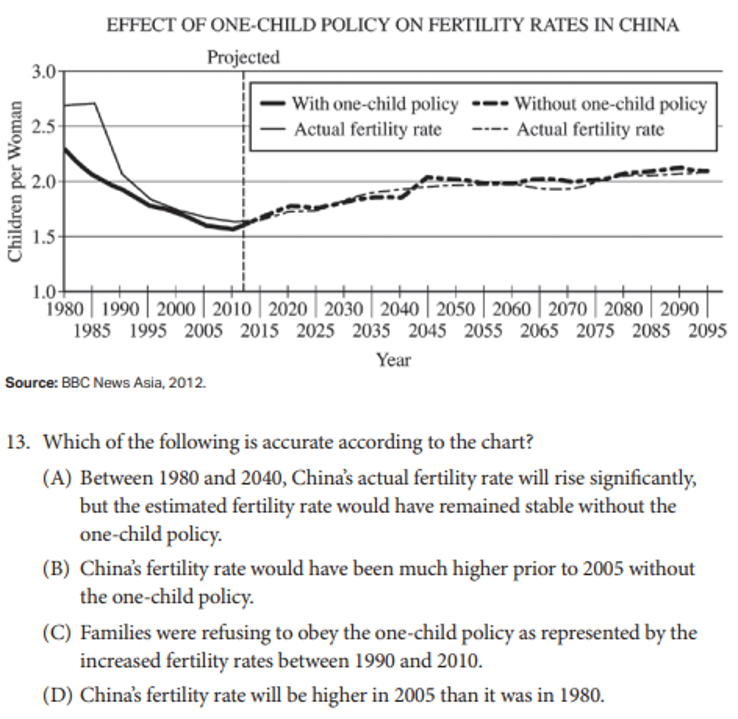
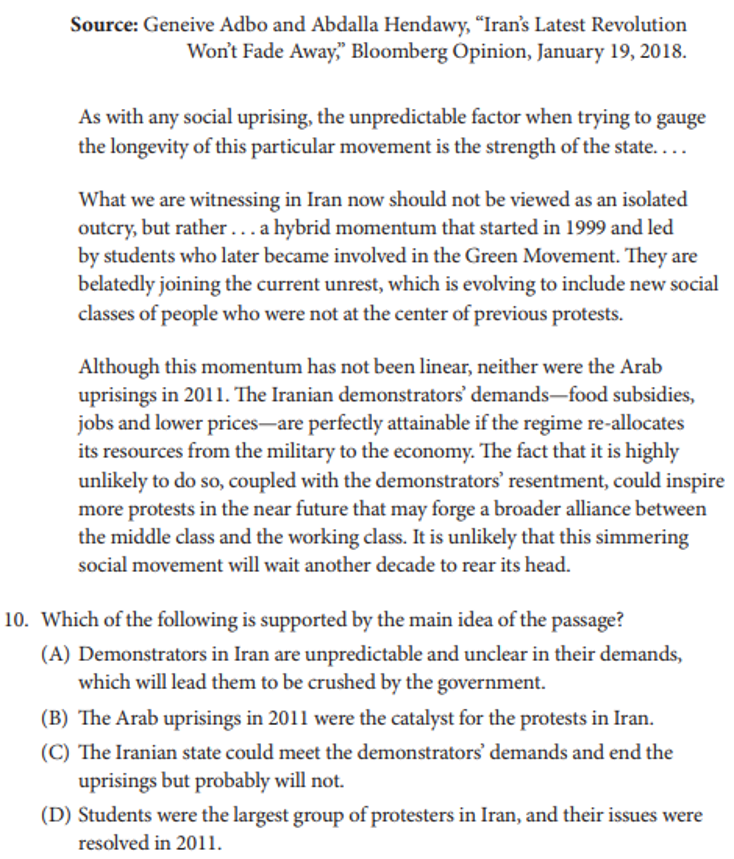
Question Type
Recommended Timing
Weight Given to Exam Score
Conceptual analysis
10 minutes
11%
Quantitative analysis
20 minutes
12.5%
Comparative analysis
20 minutes
12.5%
Argument-based essay
40 minutes
14%
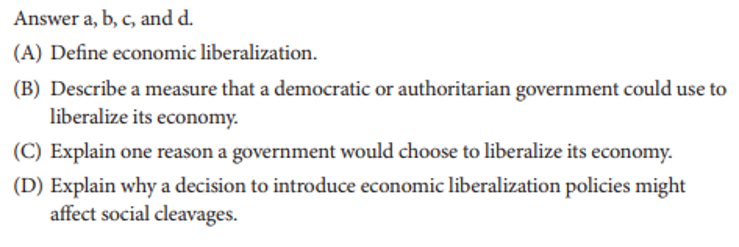
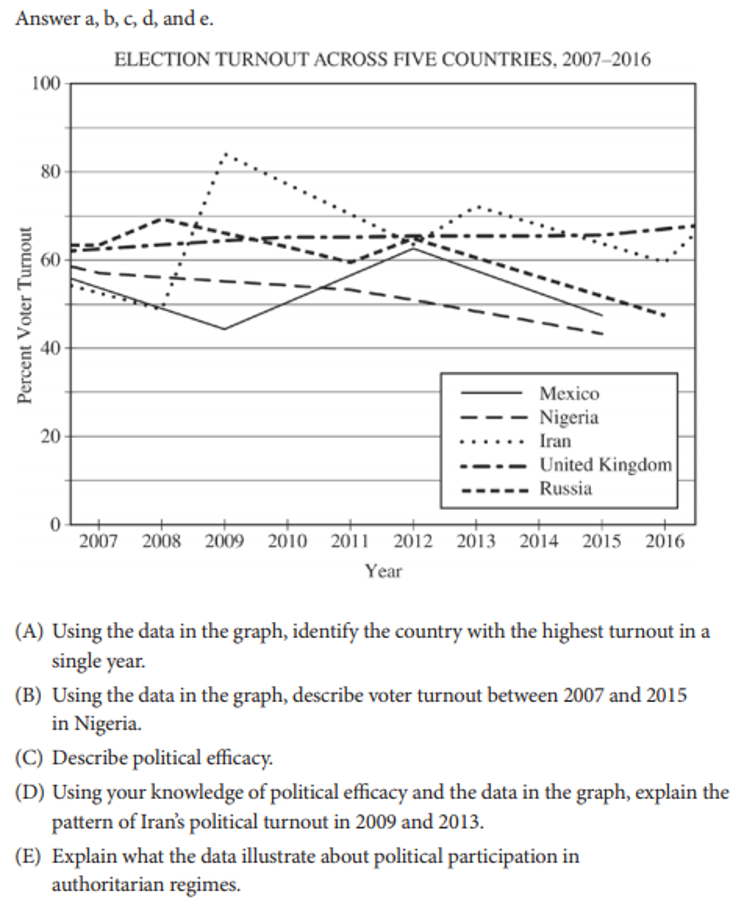
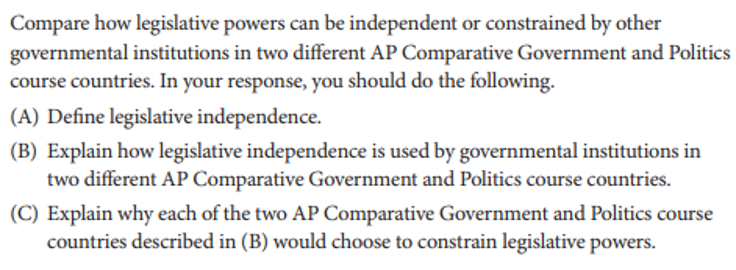
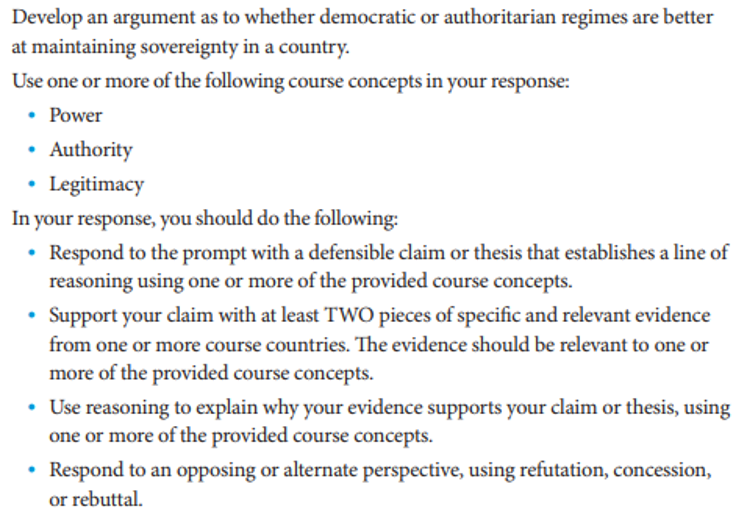
AP Comparative Government Score Distribution, Average Score, and Passing Rate
Exam
5
4
3
2
1
AP Comparative Government
22.4%
24.4%
19.2%
18.7%
15.3%
Best Ways to Study for the AP Comparative Government Exam
Step 1: Assess Your Skills
Step 2: Study the Theory
Step 3: Practice Multiple-Choice Questions
Step 4: Practice Free-Response Questions
Step 5: Take Another Practice Exam
Step 6: Exam Day




